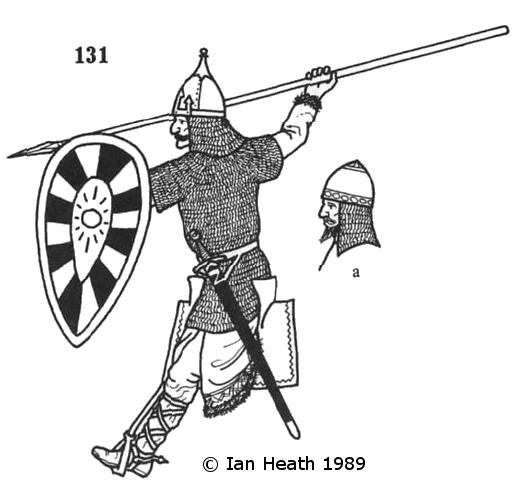RUSSIAN CAVALRYMAN, 11th-12th CENTURIES
An extract from Armies of Feudal Europe 1066-1300by Ian Heath


131. RUSSIAN CAVALRYMAN, 11th-12th CENTURIES
At this date Russian equipment was generally very similar to that of the Poles and many 12th century cavalrymen would have borne a close resemblance to 112. However, the round shield, though still in use in Russia at the beginning of this era, was soon replaced amongst horsemen by the almond type shown here, usually painted with various devices. His helmet is one of the types most popular in Russia in the 12th century. 131a depicts an alternative also in common use, which if worn with fur trim tended to indicate a high-ranking nobleman. Helmets of more conical shape were also worn, and all had mail aventails. This man's body-armour consists of a short mail corselet with quarter-length sleeves. A quilted kaftan was normally worn beneath the corselet for added protection and, in addition, Russians quite often wore a 'riding coat' (a short-sleeved, fur-trimmed kaftan) over their armour. Otherwise clothing consisted of a long-sleeved tunic of linen, rich brocade or dyed silk reaching to below the knees, often split at the sides (surprisingly) to assist riding. The hem and cuffs were either embroidered in gold and silver thread or trimmed with fur. A cloak of coloured wool, silk or fur might also be worn.
The lance was fairly slender, used for both thrusting and throwing. Secondary armament consisted of sword, mace or axe or any combination thereof, the mace being particularly popular. The head (and sometimes the handle too) was usually of lead, bronze or iron, sometimes decorated with gold to denote rank, the sabre was also used to some extent.